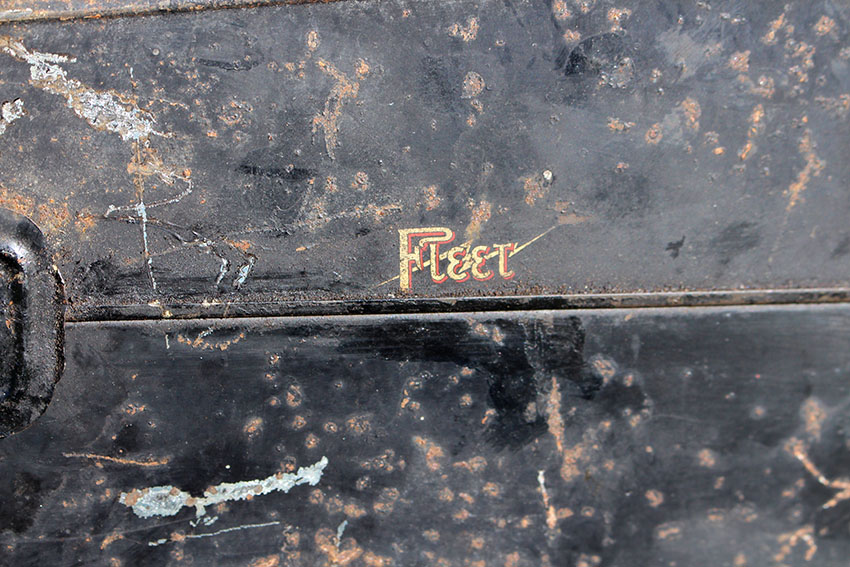
The ‘National Arms & Ammunition Co’ operated from Holford Mill in Birmingham. In 1888 it was taken over by the ‘Gatling Gun Co’ which, after liquidation in 1891, was acquired by Grenfell & Accles. Accles Ltd was established at Holford Works, Perry Barr, Birmingham in 1896 to manage all the company’s holdings. The company exploited the relatively new process of cold drawing with its considerable potential in the booming bicycle industry, and a new weldless steel tube shop and machine shop were set up.
Contracts were entered into to make the ‘Lu-mi-num‘ cycle, and in 1897 Accles also agreed to supply the newly-established ‘Fleet Cycle Co’ with cycle manufacturing equipment. However, Accles went into liquidation, bringing down the ‘Lu-mi-num Mfg Co’ with it, and before an agreed merger with Fleet could take place.
Fleet was duly bought by Charles Sangster of Components Ltd, which owned the Ariel Cycle Co (and later the Rover Cycle Co, among various other cycle firms and component manufacturers). Most of the top cycle makers set up or purchased other cycle companies to sell similar bicycles at cheaper prices. Often they were made in the same factory to the same standards, but with different identifying features such as chainwheels (and obviously different brand names). This was because there was a sizeable profit in cycle manufacture and companies did not want to reduce the prices of their leading brands. Instead they took advantage of their existing sales and distribution networks by supplying their cheaper marques alongside.
As well as this confusing marketing exercise, in the case of Components Ltd, local cycle shops could buy a similar bicycle in knock-down form and assemble it themselves to sell it to their local markets at even cheaper prices (using their own brand name), so there were in fact three separate pricing structures. In other words, brand loyalty to the leading marques provided the best product but, if required, you could also find a similar quality machine from the same supplier with a different name at a lower price.
Sangster’s leading brand was Ariel, and cycles sold under this marque were fitted with the company’s best components, including Biflex tubing to the front fork & rear chain and seat stays.
Most Fleet bicycles were standard models without the extra embellishments, as in the case of this ‘Standard Lady’s’ model.
The bicycle itself is in wonderful preserved condition, with original unrestored paintwork and lining, and original transfers (decals) on the steering head, chaincase, down tube and rear mudguard. The front mudguard was missing when I bought it, but a replacement will be fitted on sale.
The transfers on the downtube and the rear mudguard are for the agent that sold the bicycle: C. Allen, 114 Eastgate St, Bury St. Edmunds, Suffolk.


1910 Fleet (Ariel) Standard Lady’s
24″ Frame
28″ Wheels
(Now sold)







1909 ARIEL CATALOGUE EXTRACTS

















1914 COMPONENTS TRADE CATALOGUE EXTRACTS































































